I despise only knowing part of “the story.” I grumble at television “cliff-hangers” and movies that are released in two or three parts. I stay-up late reading through the excitement of books and sit in my car in my driveway when I get home from work so I can hear more of my audio book. As a monthly contributor to Frederick Magazine, I write an article called Uncovered, my goal for the article is 250-300 words and I always go over. I feel like a story worth telling, is worth telling completely so while in the end, you might only read 300 words, several hundred more get left on my desk, dutifully stashed in object files and databases to be shared in the future.
If you’ve read the article over the last two years you might have noticed that I like to make the article a sort of “Thank-You” to those who have recently donated something to our collections. It’s a small way for me to honor their gift and show them that Heritage Frederick is proud to be the keeper of their family heritage not just for today but into the future as well.
One of the most enjoyable parts of my job is sleuthing out what personal stories might be attached to an item in the collection. Whether it is a cannonball, a portrait, a child’s shoe, a hat or a tea cup, what brings each item we display to life for our visitors is an interesting backstory and our ability to solidly connect a particular location or person in Frederick County to each item. This is a glimpse into what that process looks like for me.
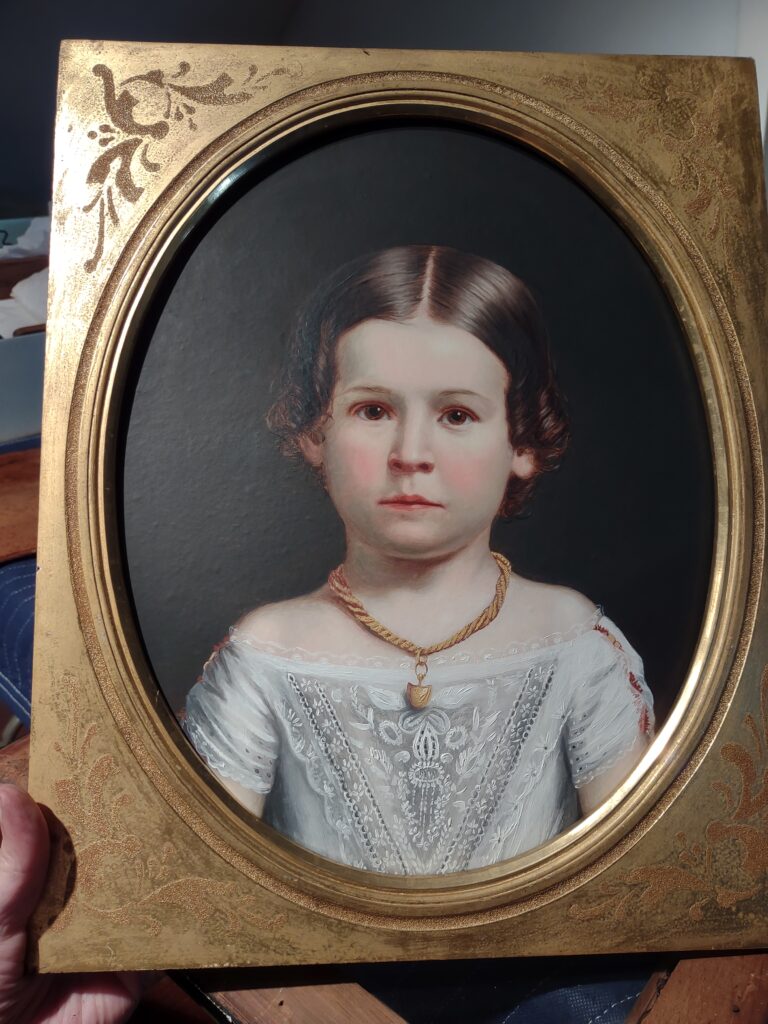
My example for this article is a portrait of a young girl recently donated to our collection. The painting, like most of the 100+ items that are donated each year to Heritage Frederick, came with a bit of information. The donor of the piece is the girl in the portrait’s great grandson. When she grew up the little girl in the painting married a man that opened a business in Frederick that would last for 103 years making their last name synonymous with the shopping experience downtown for generations of Fredericktonians.
Genealogy is usually my jumping off point. When an object is donated I need to confirm the information that comes along with it, the what (is it), the who (did it belong to), the where (was it made) and the when (was it made). Sometimes the story has gotten lost or altered as the item is handed down through the generations, and before I write an article or a gallery label I need to make sure that what came in as “my grandfather’s top hat” isn’t really more likely to have been the donor’s great great grandfather’s hat. The dates have to line up so that it’s reasonable to believe that the item and the person existed at the same time and a family tree helps me do that. If the item’s donor is a relative, sometimes I will start with them to create a family tree.
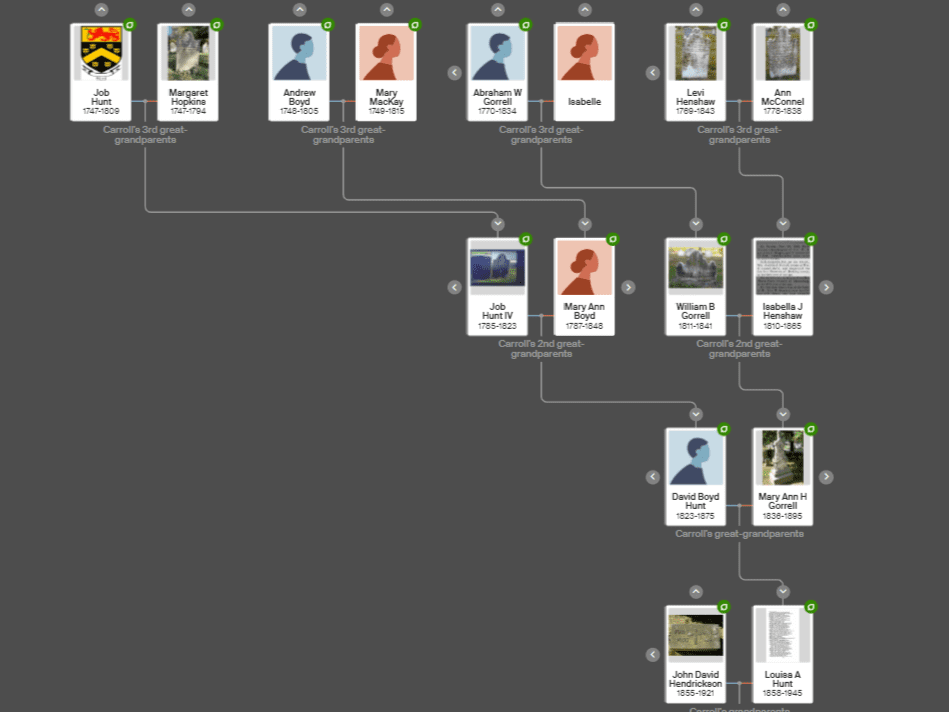
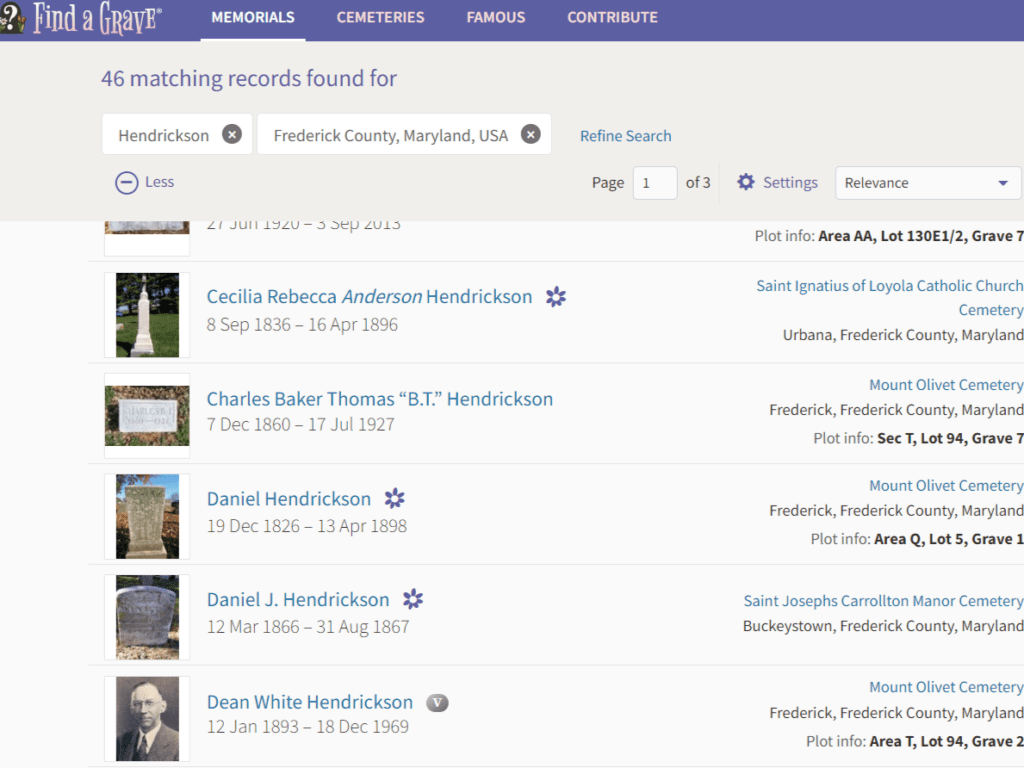
In this case, because the woman pictured and her husband were such notable residents, I started the family tree with them. I use Ancestry.com because I have many years of experience on it and have come to understand what sources should and should not be trusted on that site. To begin, I visited findagrave.com, another online resource that I have many years of experience using, to search for the couple’s graves and get the exact years of their births and deaths. I build the tree out going back in time to find the couple’s parents, grandparents and so on. Whenever possible, taking each branch of the family back to their immigrant ancestor, the first person on that line to arrive in America. I find that knowing what culture, traditions and values might have followed these families into our corner of Maryland from their home countries sometimes flavors their lives and decisions once they are here and sometimes for many generations, therefore it’s important in creating a complete picture of who the little girl in this portrait would someday be.
I arrived at Heritage Frederick two years ago this month and fairly quickly realized that at this point in my research, finding their ancestors, there was a further step I could take. I realized that this little girl, who’s heritage I now knew was English on her father’s side and Dutch, Irish, and Scottish, as well as English on her mother’s side, most certainly had many living relatives. I could extend the family tree forward to the present, connecting not only the donor of the painting but all her other current living descendants as well. These names, as well as addresses when I am able to find them, have been instrumental in contacting family members to let them know when their family’s heirlooms will be exhibited. When necessary it has also been a valuable resource for exhibition planning, to contact those descendants to see if they have any more information or other artifacts that relate to the ancestors represented in our collections.
The information collected while building a family tree lets me know what places the family lived and traveled to, what occupations the men of the household had, how many children there were in the family, as well as triumphs of business and tragedies of health or accident. It reveals newspaper articles about weddings, parties, meetings and events that these people attended and their obituaries, sometimes revealing a little about their personality, their values, their hobbies and about the people they left behind. If I’m very lucky, this research reveals a photograph of the person or an image of their home and very often, a photo of their grave.
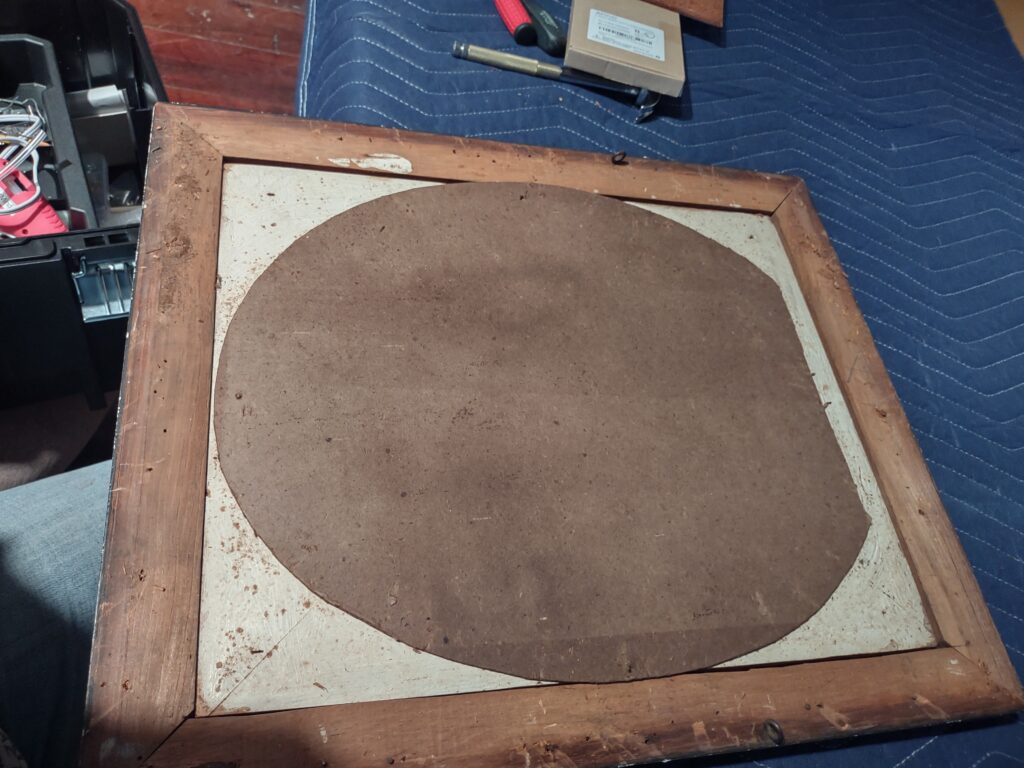
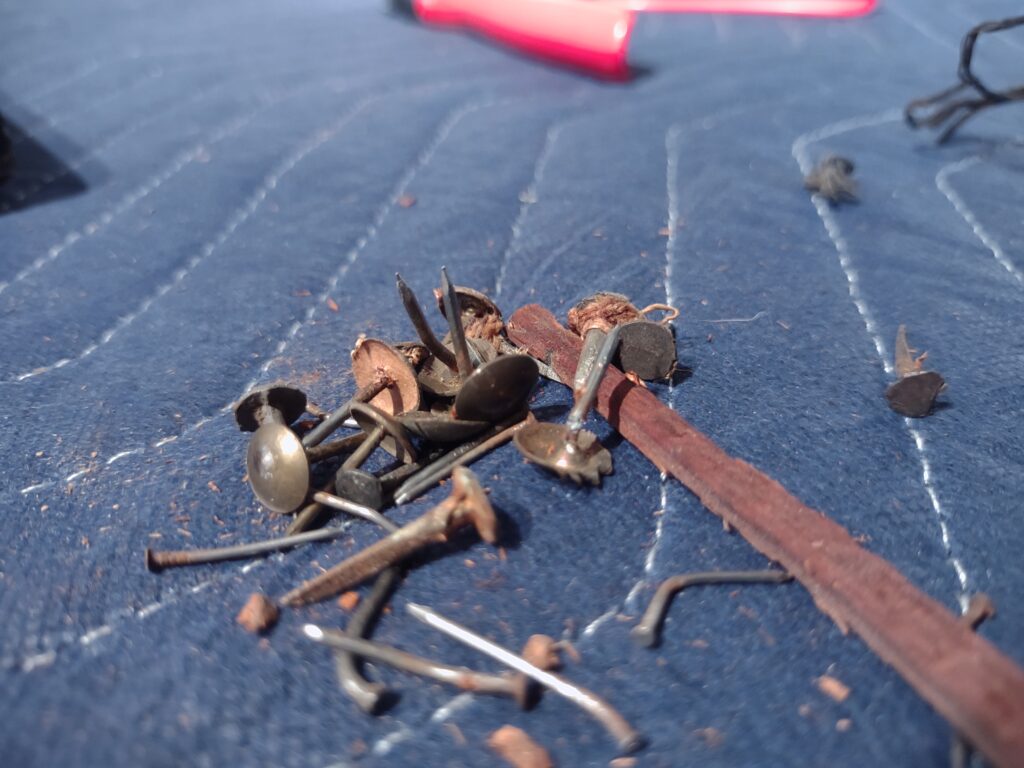
After collecting all the information that the girl in our portrait’s family records have to offer. I then turn to the object itself. In this case we have a painted portrait, under glass neither signed nor dated. To find out more and to also assess the condition of the painting, I unframe the work. The backing board, a thin rough sheet of wood tells me that it is quite old as it is hand hewn, the nails that once held it in place are a combination of handwrought nails and furniture tacks. Once out of the frame I find that the portrait is painted on an oval piece of artist board but is not signed. That it is not painted on canvas may help me identify the artist, as some would have preferred to use only canvas. It also tells me a little bit about the economics of the girl’s family and perhaps of the artist as well in that a painting on board is less grand both in size and expense and more portable. The painting is very well done, the small girl’s slick dark hair and the intricate embroidered pattern on her white dress are expertly rendered. I have now collected all the information I need to take my next step.
To recap and reveal what I have found to this point: the portrait is of a young girl born in Indianapolis, Indiana in 1858. Her parents descended from early settlers who came from the British Isles and Holland and the couple, born in Frederick County, MD, and Berkeley County, WV, traveled together to Indiana looking for opportunity and to start their family. The girl in the portrait lived in Indianapolis until her marriage in 1883 so we can infer that the portrait was painted in Indianapolis. She appears to be between 3 and 7 years old. I make this judgment on her age, by looking at the length and style of her hair, still short, ear length, parted in the middle and combed flat ending in curls around her face. Her hair hasn’t been growing in for long and if pushed, I would say she is much more likely to be only 3 or 4 years old. Also the style of her clothing, a white, short-sleeved, cotton or linen with delicate floral embroidery across the front, is something commonly worn by toddlers and young children during this period. Knowing all I can about the life of the people our objects represent would only be giving our visitors half of each object’s story. When I look at a doll owned by Julia Roelkey Myers or moveable printing type used at the turn of the 19th century by the Frederick News Post I also want the story of the maker, manufacturer, creator or artist that produced these items (in these cases J D Kestner Doll Company of Germany and the E. J. Hamilton Holly Wood Type Company in Two Rivers, Wisconsin).
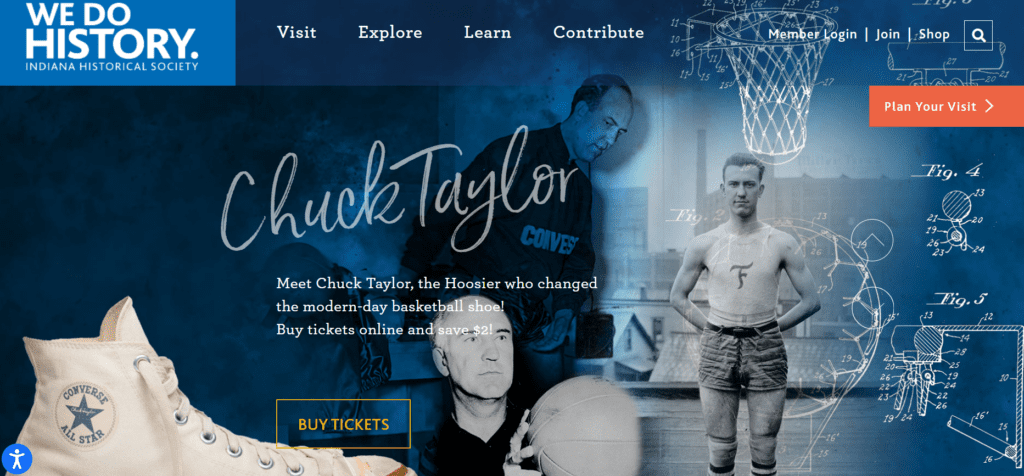


I now take what I know and look for professionals with more specialized knowledge to assist me in learning any more that I can. I am hoping to identify a talented and very skilled portrait artist who was working in Indianapolis between 1861-1865, one who is known to have painted, at least occasionally, on artist board instead of canvas. I needed to find someone who knows everything possible about early Indianapolis, which was only incorporated 11 years before our portrait sitter was born there. After a bit of internet sleuthing, I decided to contact the staff at the Indiana Historical Society, the Indiana State Museum, and the Indianapolis Museum of Art at Newfields. I emailed a selection of staff at each location, explaining my research and sending along photographs of the portrait of the little girl, both framed and unframed. The information that I have received back, while not definitive, is something worth exploring. I now have the name of an artist who I can investigate. Both making my own determinations about how similar his body of work is to our portrait and continuing to search out museum professionals who might offer more insight. For now, I’m content that the timeline, career, and talent of this particular artist all seem to correlate with whomever painted our portrait and I have been able to determine that several of his works, both portrait and landscape paintings, were done on artist board.
While we do not currently have plans to include this portrait of a young girl in an exhibit, this research was done as part of the normal intake process that each donation goes through when it is added to the collection of Heritage Frederick. All the details of this portrait will be revealed in my Uncovered article in the July 2024 issue of Frederick Magazine.
June 4, 2024 by Amy Hunt, Heritage Frederick Curator
